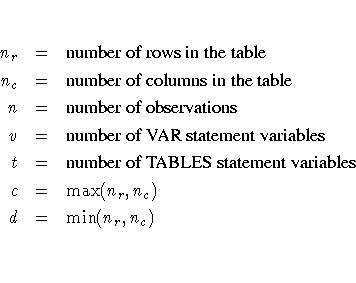Chapter Contents
Previous
Next
|
Chapter Contents |
Previous |
Next |
| The CORRESP Procedure |

For TABLES statement input, more than
For VAR statement input, more than
PROC CORRESP tries to store the raw data (TABLES input) and the contingency table in memory. If there is not enough memory, a utility data set is used, potentially resulting in a large increase in execution time.
|
Chapter Contents |
Previous |
Next |
Top |
Copyright © 1999 by SAS Institute Inc., Cary, NC, USA. All rights reserved.